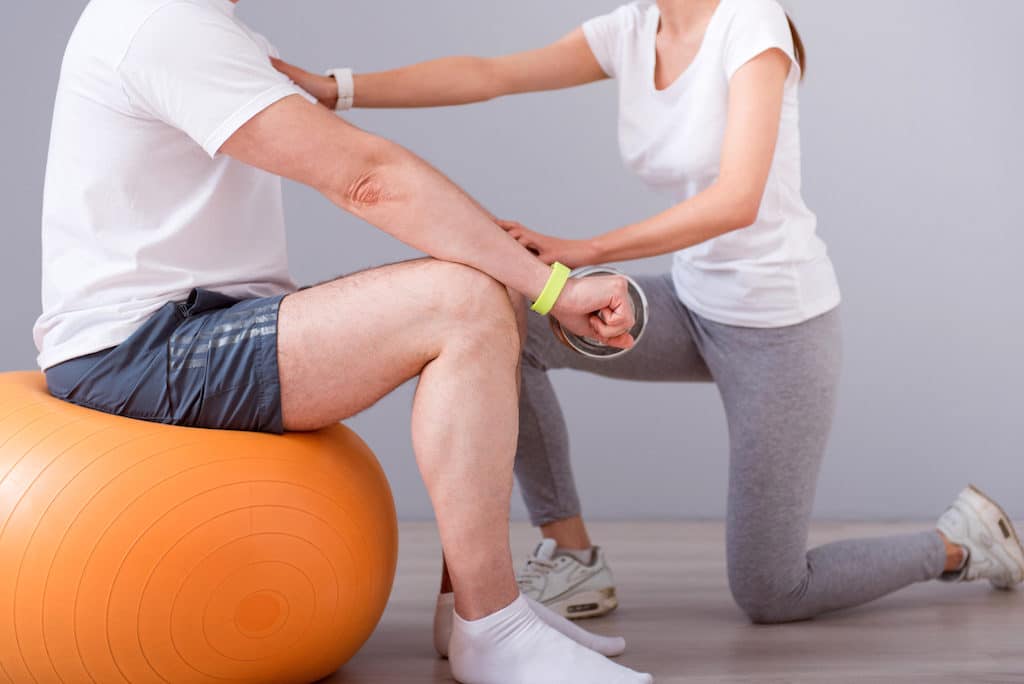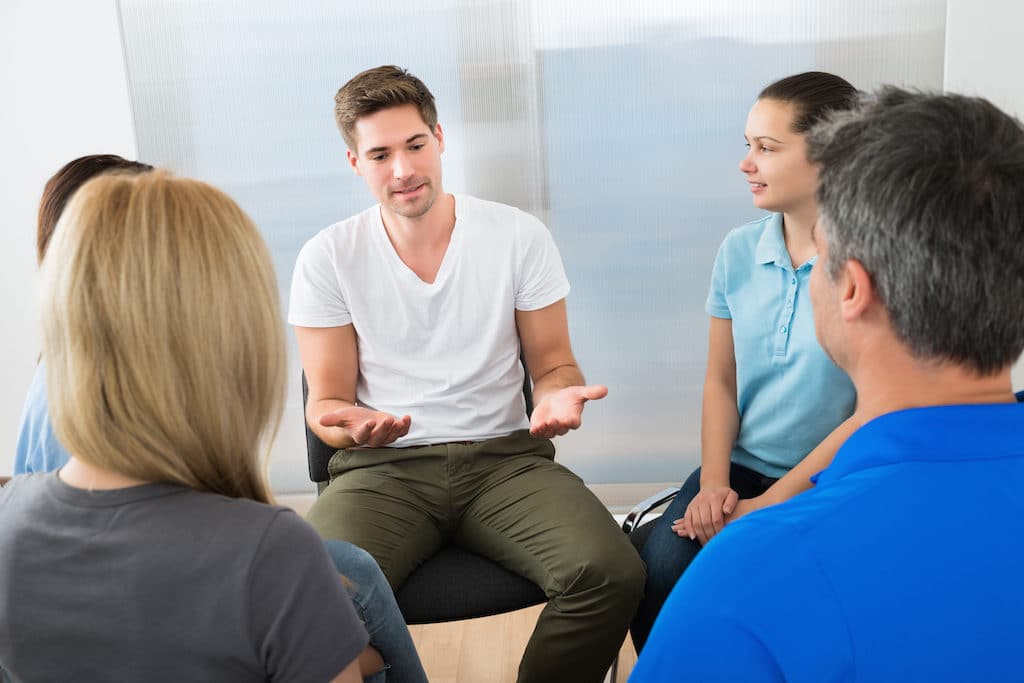What to Expect when Recovering from a Stroke


After experiencing a stroke, survivors can begin to recover through rehabilitation. However, recovery from stroke is a process that survivors need to continue throughout their lives. Formal stroke rehabilitation is important for survivors to regain their independence and control of body movements and functions.
Although no two survivors will go through the rehabilitation process the same way or follow the same timeline, rehabilitation usually helps improve mental, physical, and emotional functions within the first few weeks following the incident. Over time, stroke survivors can continue to improve, even years after starting rehabilitation.
It is important for survivors to remember there is hope for recovery, even though it can be a long process. No doctor can promise a complete recovery; however, it is important for survivors to educate themselves about the stroke recovery process and stages of healing to better understand and prepare for the road ahead.
Considerations for Healing and What to Expect

Stroke survivors are not healed immediately after symptoms fade. Instead, they should expect a rehabilitation program that begins in the hospital after suffering from stroke and continues throughout life. Once you suffer a stroke, you must continue to participate in rehab to improve your mental, physical, and emotional processes that were damaged.
Starting Rehabilitation
Medically stable stroke patients can expect to begin rehab about two days after the stroke. The quicker the process begins, the higher the chance of recovery. Only about 10 percent of stroke survivors recover almost completely after a stroke. Even then, this is not a full recovery. These stroke survivors regain the majority of their bodily functions with little inhibitions but still may see some limited movements.
The highest percentage of stroke survivors require special care and intensive rehabilitation to help them with their function impairments after a stroke. A stroke can severely affect daily activities such as dressing, feeding, or bathing. The main goal of rehab is to help a survivor gain independence by targeting physical and emotional well-being after a stroke.
Paths to Recovery Vary
Although we know that stroke can have a severe impact on brain and nervous system functions, it is still unclear how the brain copes with the aftermath of a stroke. Stroke can kill or damage brain cells temporarily or permanently, but it is possible for healthy brain regions to take over damaged brain regions after a stroke. This is why it is nearly impossible to predict how each stroke patient will recover.
In the case of stroke recovery, no two stroke patients are the same. Unexpected stroke recoveries can occur with survivors suffering the worst damage. Stroke rehabilitation works to build the confidence of survivors while giving them the best chances at close-to-full physical, mental, and emotional recovery.
Stroke Recovery: What to Expect
Of course, every stroke patient will recover in his or her own way and within different time frames. However, most stroke survivors flow through similar stages of emotional recovery at some point during the process. The emotional recovery stages typically include:
- Depression. It is normal for stroke survivors to experience depression some time after a stroke. Depression can occur once survivors realize their lives and abilities have changed, especially those who suffered from severe impairments. Stroke also takes a tremendous toll on the body, causing extreme fatigue that can lead to depression.
- Anger. Stroke survivors may become angry when realizing their independence has decreased from the stroke. Those who were very independent before a stroke may now require special care from medical staff, family, or friends. These patients may take their anger out on themselves or their loved ones.
- Anxiety. It is also normal for a stroke survivor to feel extreme anxiety after a stroke. Will life return to normal? Will a stroke happen again? How long will it take to recover? Will family and friends be there when needed most? A stroke can cause survivors to question their abilities and the future of their health.

As a stroke survivor, it is completely normal to go through a variety of emotions as you come to terms with your new lifestyle, the recovery process, and the things you need to do to maintain your health. But the way you handle these emotions can significantly impact your progress during recovery.
Seek Support
If you are experiencing depression, anger, anxiety, or any worrisome emotions after stroke, enlist the support of your loved ones. Do not be afraid to ask for emotional or physical help. Most importantly, talk to your doctor about your concerns. He or she can help you devise the best plan to overcome your emotions so your recovery can be as productive as possible.
Finding Inspiration and Building a Plan

After suffering from a stroke, you might find it difficult to begin your life again. You will likely need some inspiration to get moving and begin the rehabilitation process as soon as possible. But remember, it is this willful attitude that will determine how productive your recovery is.
Finding Inspiration From Survivors
You will likely hear many stories about stroke survivors who surpassed their doctors’ and families' expectations. These survivors are the ones who put forth as much effort as possible to regain their independence and continue their lives as normally as possible. Rather than let stroke control their lives, they took control.
If you need extra motivation, read some inspirational stories from stroke survivors in your position. They can give you the boost you need to understand that you, too, can recover.
Educating Yourself
It is also important to educate yourself about your own recovery. Learn everything you can about occupational therapy and physical therapy for stroke survivors. You shouldn’t feel that you are at the whim of your medical team, you should have a say in your recovery. When you understand what works best, you can also prepare your mind and body for what is to come.
Neuroplasticity
One of the most confusing things to understand in stroke rehab is neuroplasticity, or retraining the brain to carry out functions that may have been impaired by a stroke. However, neuroplasticity is one of the most important parts of rehabilitation, and it can even be fun and exciting with new technology, including video-game-focused rehab devices.
Lifestyle changes
Even with all of the helpful rehabilitation therapies available, stroke survivors must remember that lifestyle changes are equally important for recovery. Pain management may become a new part of your daily routine, with the help of useful stroke devices. Educate yourself on important lifestyle changes you can make after a stroke that aid in a more productive recovery.
Prepare for the Road Ahead
Stroke recovery is a difficult process, emotionally and physically. It can take rehab that begins immediately after a stroke and lasts throughout life, and no two survivors regain functions the same way.
Stroke survivors should educate themselves about the rehabilitation process and actively participate in their own recoveries. It is important for each stroke survivor to have a strong support system and medical team who he or she feels comfortable sharing concerns with. Support groups, lifestyle changes, pain management, and physical rehabilitation are also important parts of a comprehensive recovery program after stroke.
All content provided on this blog is for informational purposes only and is not intended to be a substitute for professional medical advice, diagnosis, or treatment. Always seek the advice of your physician or other qualified health provider with any questions you may have regarding a medical condition. If you think you may have a medical emergency, call your doctor or 911 immediately. Reliance on any information provided by the Saebo website is solely at your own risk.
All content provided on this blog is for informational purposes only and is not intended to be a substitute for professional medical advice, diagnosis, or treatment. Always seek the advice of your physician or other qualified health providers with any questions you may have regarding a medical condition. If you think you may have a medical emergency, call your doctor or 911 immediately. Reliance on any information provided by the Saebo website is solely at your own risk.



